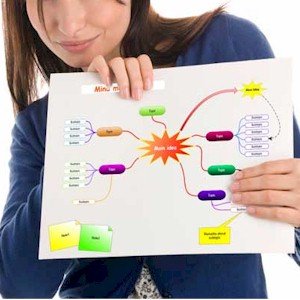 When we need to learn something new, a new subject in school or during a seminar, what we’re accustomed to doing is writing down notes on paper. Jotting down what we think are the most pertinent points, details which we think are important.
When we need to learn something new, a new subject in school or during a seminar, what we’re accustomed to doing is writing down notes on paper. Jotting down what we think are the most pertinent points, details which we think are important.
This occurs whenever we’re required to absorb new information. Traditionally, the best method has been to take concise notes, this from either reading text books or attending classes. We then go back and review all the material over again, this to maximize absorption.
You may be wondering if there’s a better way, a more efficient method of taking notes while learning the information quicker. Does one method work better over another, for instance.
It’s found that there’s no one method which works the best for all learners in all situations, this since everyone’s brains are wired differently in how we absorb and retain information.
Old Fashioned Note Taking
The issue with taking notes the traditional way is that it’s an extremely passive and unorganized process. Scribing down notes fails to get the brain involved in properly interacting with the information, thus it becomes bored.
If you’re able to somehow get your brain activated to becoming more involved and aware in the organizing of all the new material that’s being presented, then you’ll learn and retain better.
For those who are strong in visual learning, can benefit from taking notes which includes plenty of graphs and drawings, even animations. If you’ve got a high aptitude in auditory skills, but are weak in the visuals, then you’d be better off voice recording all your notes to remember better.
One proven technique for better note taking, which is found particularly effective for those who are visual, is a method known as mind mapping, or creating a learning map.
The Mind Mapping Technique
Although it does take a bit of practice to use mind mapping effectively, it’s found that the majority of people find they can retain and remember information better with a lot less work.
The steps of mind mapping are easy once learned. What you need is a large blank piece of paper, a few pens or pencils, preferably in a variety of colors.
What you’ll be doing is filling the entire page writing down notes, so it becomes important to write concisely. With practice, you’ll be able to judge what the ideal size of writing tablet which will work the best.
Steps To Visual Mind Mapping
As you listen to the speaker or you’re reading the study material, decide what you think is the overall main theme of the topic. For instance, the main theme might be “Why planes crash,” or “How plants survive in the cold.”
Once you’ve decided what the main theme is, then write down the keywords in the center of the page. Draw a circle around it as it’s the main theme. Don’t write down a sentence, but instead, just the main words which will refresh your mind what the main subject is.
Connecting The Sub-Themes
Continue to listen or keep reading, look out for the first branch sub-theme which presents itself, which would be the sub idea to the main theme.
Once you come across the first sub-theme, pick a spot near the main keyword and write it down. Draw a circle around it, and then draw a line connecting it to the main theme.
Every time that you come across a new sub-theme, write it down using a few keywords to summarize the new introduction, draw a circle around those words, and then connect it to the main theme using a line.
Eventually what you’ll have is the main circle in the center of the page, with several spokes which are stemming from them, representing the sub-themes.
The spokes and lines don’t need to be straight, they can be of any length you want. The circles don’t need to be circles, but instead be squares or ovals if you prefer, signifying their importance. You can use different colors if it helps in organizing the ideas and sections better.
Adding To The Mind Map
As the speaker continues, you’ll most likely find that some of the ideas which are being presented supports the details which clarifies or illustrates one of the sub-themes that you may have already identified.
If this is the case, then write them down as subs to the sub-theme, this by using the keywords, enclose them in a circle, and then link them to the sub-theme, connecting it with a line.
Eventually your sub-theme circles will have spokes stemming from them as the speaker or lesson continues to present itself. At first glance, you’ll be able to understand the dominant theme of the subject, along with the underlying bridge of the ideas.
Learning From The Mind Map
If you happen to have your own ideas or input that you need to add, this while listening or reading, then include them as well. What this proves is that your brain is actively interested and interacting with the material.
When you begin making mind maps for all your notes, what you create are extreme visual documents which differs from the docile traditional methods when taking notes for a class.
Those who happen to learn better by using visual cues will particularly benefit from constructing these mind maps, which clearly displays the relationships between the main subjects theme, the sub-themes, and all the supporting facts and ideas.
It’s recommended that you try out this method, and find out whether this effective note-taking technique can work for you.
